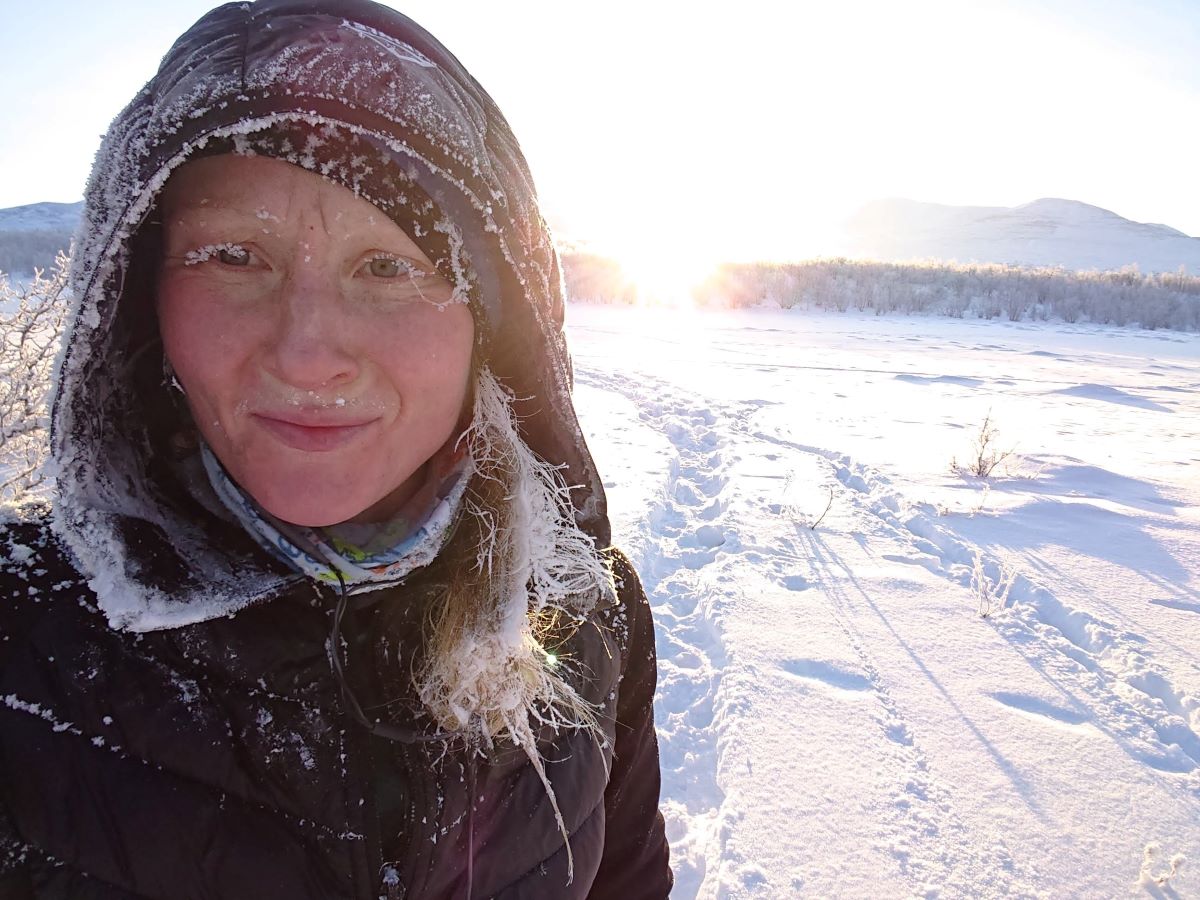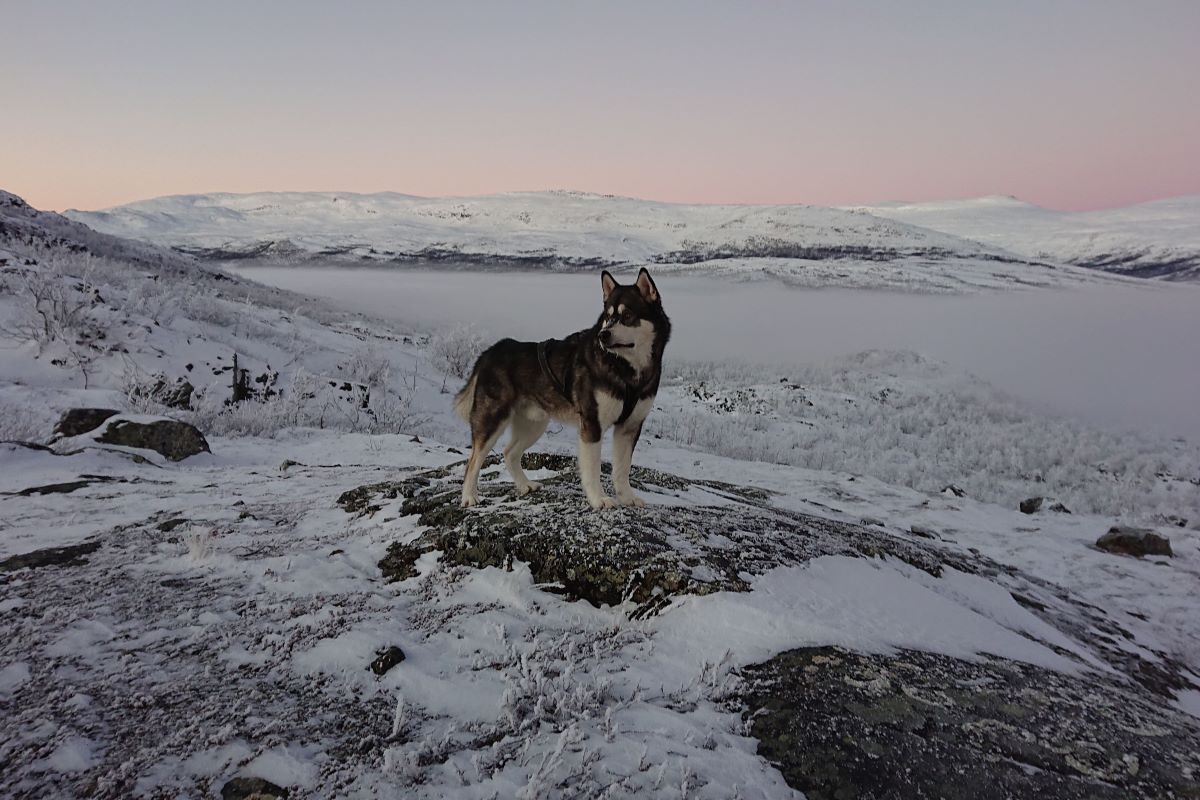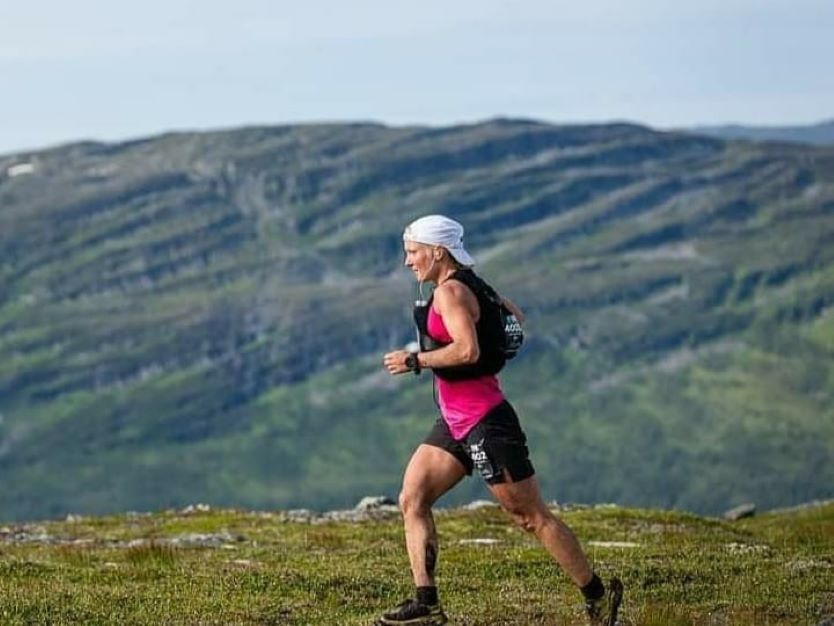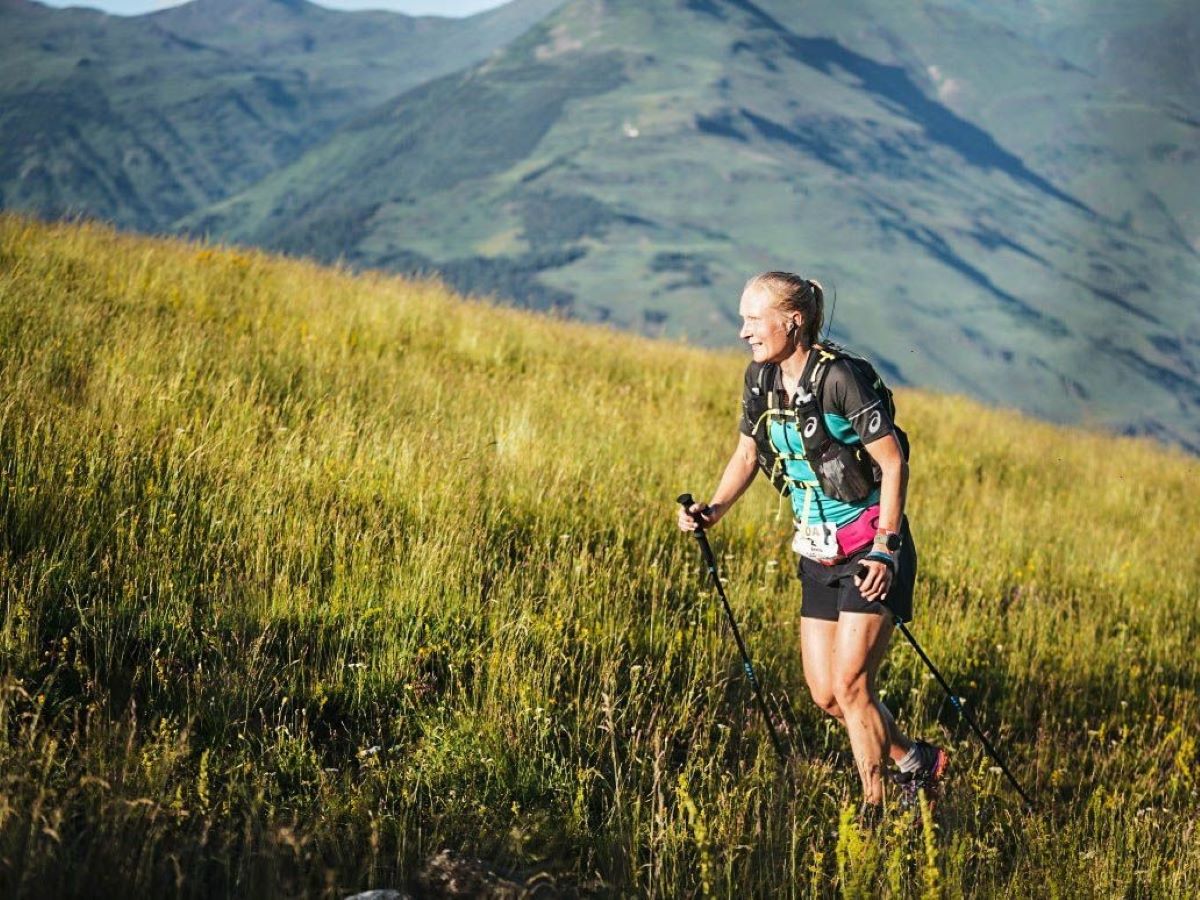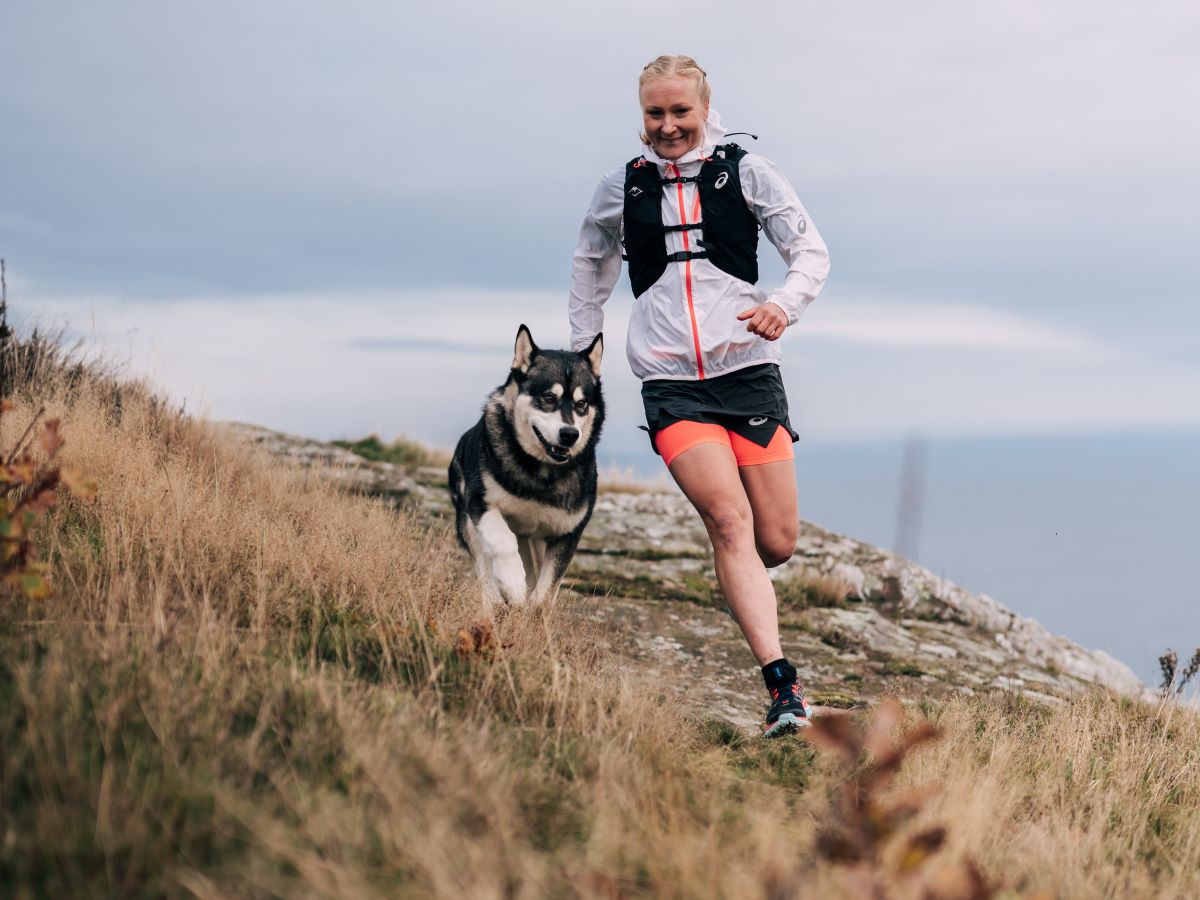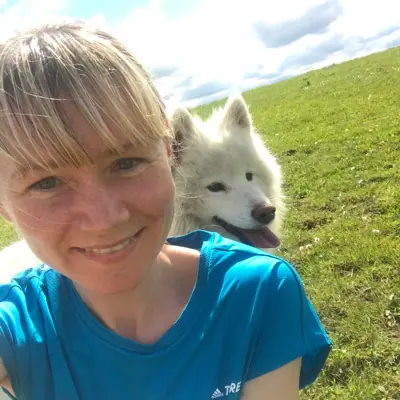Anna Carlsson recently placed third at the 2022 Diagonale des Fous 100 miler, navigating active volcanoes, on the beautiful but unforgiving trails of Réunion Island. She did so under challenging circumstances, not long after recovering from an illness that kept her off the 2022 UTMB start line — in a show of resilience that demonstrates why the 37-year-old Swede has quickly climbed the ranks of ultrarunning since her first race in 2017. We spoke with her to hear about Diagonale des Fous, her life in northern Sweden, and why she’s mostly raced ultramarathons so far.
When we spoke, in mid-November of 2022, Carlsson was settling into a season of slow running forced upon her by the climate around her Scandinavian home. She said, “It is very dark now. The sun comes up just for a couple of hours in the day and in a few weeks we will go into polar night.” During the period known as polar night, the sun does not make it over the horizon at all, meaning almost total darkness for two months.
She said, “I think the darkness for training is not really a problem. It’s more that it affects you and you get more tired. The training ends up being slower, since I am running on snow. It’s good training, still long days out, but it’s not fast.”
This deep winter is counteracted by a period of round-the-clock daylight for two months of the summer — known as the midnight sun. While the extremes of this seasonal shift might prove difficult for many, Carlsson embraces it, saying, “I like the differences. I like the polar night and then the midnight sun is quite different. It’s great in the summer that you can do a lot of adventures even in the night, but it can be hard because you never feel like sleeping!”
Growing up, Anna Carlsson played soccer and other sports when she was in school. She left these behind upon graduating, but still maintained an active lifestyle. She said, “I went to the gym and I went running maybe three times a week, five to eight kilometers every time.”
She continued in this manner for many years, before eventually committing to run a marathon at age 25, simply because she wanted a challenge. She said, “I ran that marathon, and it went quite well but I ended up having a lot of injuries after it. I think because I didn’t have a long running background the training was quite hard on me. And then I didn’t run so much, but I moved to the mountains and was doing a lot of hiking and skiing.”
Carlsson spent a year and a half working in a mountain station in northern Sweden, where she now resides, and here she had her first introduction to trail running. But rather than a competitive sport, running for her was a vehicle to move efficiently around the mountains.
She said, “It was quite far to the nearest road, and you could only get there by hiking or by running. I started to run a little bit. I was sort of running-hiking to get around as it was a little bit faster if I mixed it.”
Without labeling it as such, Carlsson had been ultrarunning for some time before she took on her first race. She recounts, “Even before I did my first ultra race, I had probably been running up to 70k sometimes, but I didn’t really count it. And it would take me a full day because I would stop, and I had coffee with me, and I’d sit down. Trail running for me was always just a bit like faster hiking.”
With years of incidental training under her belt, Carlsson began her competitive ultrarunning career in 2017, by winning the 105k Swedish Alpine Ultra. She continued to rack up wins at home over the next couple of years, before heading to Chamonix, France, in 2019 to run TDS — where she placed fourth in a top international field. But as for many, the COVID-19 pandemic scuppered her plans to pursue further international races the following year.
She made the best of the situation, saying, “I got into other things, I did some backyard-style ultras and found my own adventures.” Backyard ultras refer to the format where runners complete a 4.167-mile loop on the hour, every hour until there is only one racer left standing. These races grew in popularity during the pandemic, as it was easy to transfer the format to virtual events in remote locations.
Carlsson competed in the Personal Peak Quarantine Backyard Ultra, a virtual race with runners taking part all over the world. She made it to the last three runners, covering over 300k in 45 hours. While others might have opted for forest trails or city blocks, Carlsson ran her backyard ultra on the frozen lake of Torneträsk in Abisko, Sweden.
Her only formal ultra in 2020 was the 100k Fjällmaraton 100k, where she placed second to Spain’s Azara García.
When opportunities to travel resumed in 2021, Carlsson headed to the notoriously technical Val d’Aran by UTMB 100 Mile in Spain. The course lacks the switchbacks found on long climbs in the Alps and elsewhere, and instead the ascents are straight up, steep, and unrelenting. Many sections of the course also go off trail onto challenging and varying terrain. These technical elements played to Carlsson’s strengths. She put in a brilliant performance, taking the win by almost three hours, and leaving strong competitors such as Kaori Niwa of Japan and Canada’s Stephanie Case in her wake. She said:
“It was a really, really nice race. I have never been in the area before. That was why I signed up, it looked very beautiful in all the pictures. It was my first 100 miler in big mountains — the Swedish mountains are quite small — so I was curious about that. And I heard it was a quite technical course, and that would probably benefit me a little bit.”
There were some challenges to preparing for the race in a very different climate, and she said, “I hadn’t really done enough elevation training for it, because it was still quite early in the season in Sweden. Here we have snow until June. So, I think I was fit, but I had a bit of a struggle with the uphill. But nothing went really bad, so it was just steady going and a nice day out.”
Seven weeks later, she found herself on the start line of UTMB, but the tight turnaround proved too much. She didn’t yet feel mentally or physically recovered from Val d’Aran and said, “I tried it but I stopped at around 100k.” After a little more time to rest and recover, in November 2021, she headed to the faster and flatter Kullamannen Ultra 100 Miles in Sweden, and sealed another win.
Her beautiful but remote home poses challenges in terms of accessing races, which Carlsson points to as the reason why she hasn’t completed many sub-ultra trail or mountain races. “I’ve only really raced ultras. I’d like to do some short races, but living up here, even going to run a shorter trail race in Sweden requires quite a lot of traveling. It’s time and money, so I generally just go for the long ones. I think next year hopefully I will do even some shorter ultras. Because I need some more speed and it’s good to also compete a little more to get more used to it.”
In 2022, Carlsson suffered renal failure — akin to kidney failure — in April, which meant running had to be sidelined for a time until she returned to full health. In July, feeling better and just getting back to training, she signed up for Diagonale des Fous, to be held in October. As she still hadn’t returned to full race fitness, the plan was to enjoy the day out, rather than “racing,” but the plan started to unravel when she unexpectedly found herself moving into a podium position.
She said, “I had trained not to perform, I had trained just to reach the finish line…. So I had decided from the beginning to just run my own race, pretend I was out in my home mountains, do my own thing, and not care about anyone else.”
She was surprised to find after 75k that she was in fourth position, and that third place, Sabrina Stanley, was not far ahead. “It changed then a little bit into competition mode. When I reached [Stanley], I really wanted to keep the third place, that was my only objective for the rest of the race. But also, my legs totally died after 100k. I think I did a decent race up to that, but after that, it was not so good!”
To add to the stress, Carlsson took a wrong turn, losing 20 minutes, and for a time did not know if the next woman had passed, once she got back on the course. Finally, with 20k to go, she received information that the fourth-place runner was quite a bit back from her.
She said, “It was the first time in a race that I had to walk the last 40k. It doesn’t feel like you are racing, it feels like you are just surviving to the end.” Survive she did, and Carlsson crossed the line in third place, in a time of 30 hours and 59 minutes.
She said that she had told her partner before the race that getting to the podium would be a win for her and that she couldn’t hope for anything more, particularly given the presence of Courtney Dauwalter on the start line. She said, “I think you put away the first position [when Dauwalter is racing].”
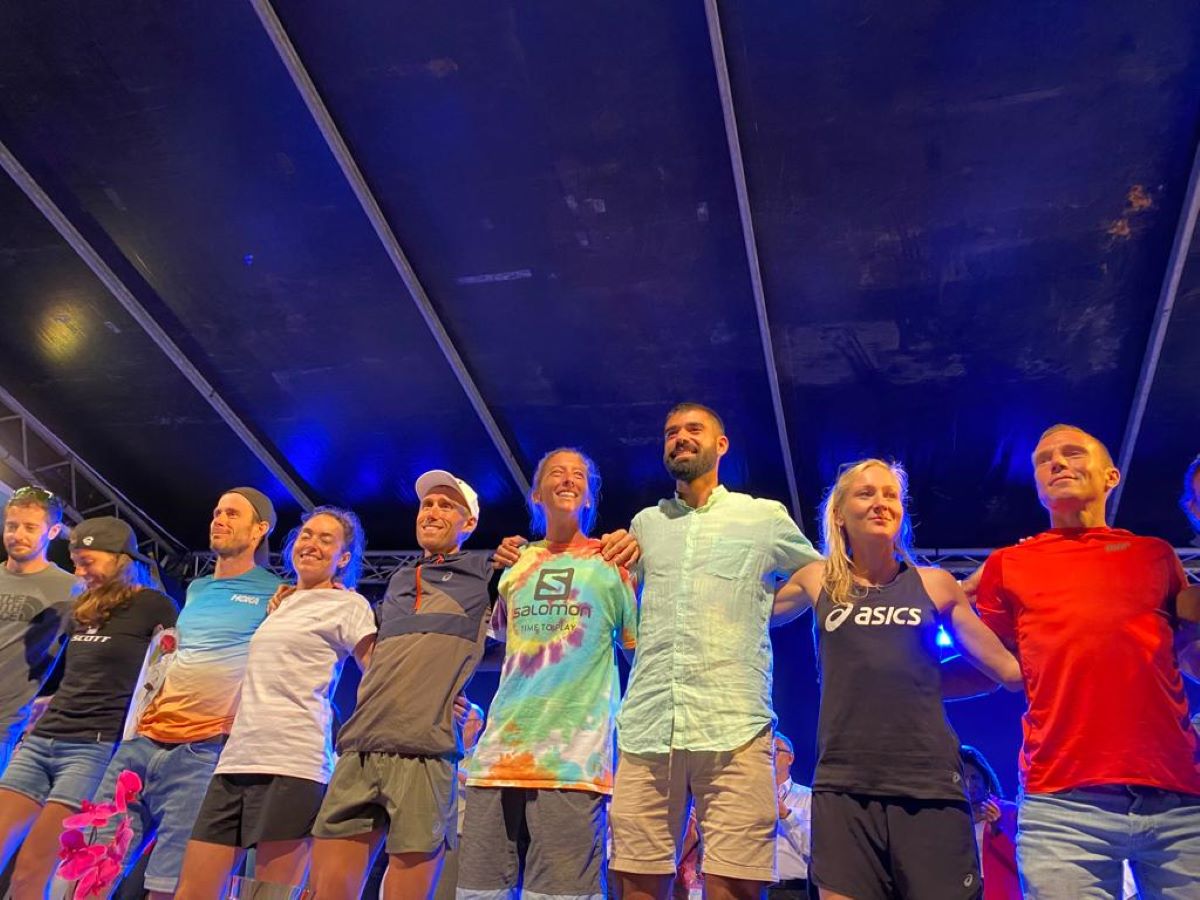
Carlsson (second from the right) at the 2022 Diagonale des Fous prizegiving, with winners Beñat Marmissolle (in the white cap) and Courtney Dauwalter (tie-dye shirt) at the center. Photo: ILOP SPORT
While she doesn’t plan to return as soon as next year, Carlsson does hope to have another go at the Diagonale des Fous, with a build-up and training block more suited to a race of its magnitude.
Carlsson now runs a guided tour company with her partner in their spectacular backyard. She said, “We do a lot of guided tours. A lot of the tours are about seeing the northern lights, but we also do snowshoeing, snowmobiling, and ice fishing. Nothing extreme, some of the people who come here have never seen snow before so it’s just getting people out.”
While still not a full-time athlete, she said, “I work a little bit less now so I can prioritize running more.” She still values the balance of having a career outside of running and added, “It’s good for the head I think, to have something else to think about, and especially at times when running doesn’t go so well.”
Although she has hinted at some shorter ultras for 2023, Carlsson isn’t leaving her love of gnarly 100 milers behind. She has signed up for the brutally technical Ultra Trail Snowdonia by UTMB 100 Mile in Wales, U.K., the 120k Transgrancanaria, and hopes to finally complete her long-awaited loop around Mont Blanc at UTMB next August. We can’t wait to follow her journey.
Call for Comments
- Have you run with Anna Carlsson?
- Or have you done any of the epic ultras mentioned in this article?
